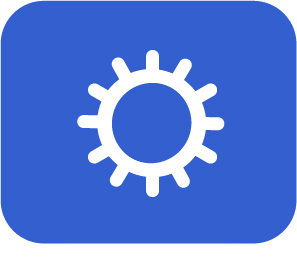
I heard the name of Marie Kondo for the first time at the end of 2018 during a trip with my friends. I was impressed by the clothing organization in my friend’s luggage. After asking her what this interesting style of folding was about, I learned that it was a Japanese approach to organizing your home: The KonMari Method. Nonetheless, it wasn't until the release of Netflix’s show Tiding up with Marie Kondo when Marie Kondo became one of my recurrent conversation topics.
The KonMari method has been a game-changer, particularly to my clothing storage. Thanks to it, I finally got the courage to get rid of so many things and was able to reduce my activewear from two drawers to just one! However, what really surprised me is that Kondo’s principles are very similar to the process we implement at Base22 when working with Enterprise Portals and Web Content Management Systems (WCMs).
Homes and Web Portals: a place for things that matter
At Base22, we specialize in Enterprise Portals and have worked with clients in their digital transformation for the past 15 years. We always tell our clients that their web portal matters since it is the place where valuable information and resources are found and collaborative conversations take place. Web portals are not just a place to store stuff: it is a place to welcome visitors, share experiences and learn from each other. In this sense, it is the digital home for your employees, vendors, citizens, clients, etc. So, let’s take the analogy of Kondo’s organizing principles and apply them to corporate portals.

1. Organizing your web portal is a transformative power that requires commitment.
A well-organized portal/home can be the catalyst for productivity, innovation, and well-being.
Once you are convinced that applying organization principles and patterns to your home or web portal will provide benefits, all the subsequent efforts to establish them will be taken with enthusiasm.
When we start working with a client, we first conduct a Design & Strategy Workshop. During this activity, we explain the principles, the process and build together a clear understanding of the expected responsibilities. We use this activity to build rapport and to set expectations on both sides. We are honest with our clients and explain to them that this process is going to require effort, time and commitment, but in the end it will be worth it.
This is similar to the KonMari method. At the beginning it is messy, it’s time-consuming, it seems really challenging—but once you are done with it, you know for sure that those hours were well invested. When you look at the results and experience the ease-of-use of the new system, you get that warm feeling that only order provides.
Once the initial effort has been made, your portal/home will be an enabler for:
- Productivity-- Because you don’t waste time looking for things or waste an opportunity by finding the wrong ones.
- Innovation-- Because now you can use that time and mental energy to focus on what is important, and since everything is easy to access, you feel compelled to share your findings and build upon what others have done.
- Wellbeing-- Because when things are well organized, that order permeates into your life and you feel different, better, lighter, and faster.

2. A clear vision is worth 1000 decisions.
When you have a clear vision making decisions becomes easy. Take the time to define your objective or desired state and involve all stakeholders in the process.
Taking the steps towards your goal is easier when you have a clear and well-defined purpose. This statement might seem obvious; however, it’s not uncommon to encounter situations in which the vision for a project hasn’t been defined. While people may know what needs to be done step-by-step in a portal project, it’s important that everyone is aware of the complete picture with the final goals.
When we take our clients through the UX Vision Alignment Exercise, we are delighted to witness these conversations. The objective of this exercise is to build alignment and reach a consensus, but we genuinely believe that the process the team goes through is in itself a result.
Once all the ideas, aspirations, principles and desires have been discussed, the rules of the game can be captured in a UX Vision that can captured in a document, a phrase or a diagram, whatever makes sense for the team. So, when the future brings questions and dilemmas, the team has a North Star to guide their decisions. Only what aligns with the Vision should be implemented.
This allows teams to reflect on the current state of things, and envision a better, brighter future.

3. Web Portal: A designated place for everything.
A system of categories eliminates randomly and careless placement.
Two of the main reasons why we have clutter in our life is because we don’t have enough space for all of the things we have and because we haven’t established an appropriate place for each item.
To solve the first problem - having enough space - we can either increase the area or reduce the number of things. Since expanding is not always easy or cheap, the most common approach is to reduce the amount of stuff we have, and to implement a storage system that is efficient and intuitive.
As for the second problem - having a place for everything - we need to define and anticipate the realm of the current and the possible, and then decide where does each element is going to “live”. This exercise eliminates random and careless placing of items, and therefore, reduces clutter.
Taking these concepts with portals means that we need first to have a deep understanding of what’s involved. For this, we conduct a Content Inventory, Audit and Analytics Review. These activities allow us to have a better understanding of the portal’s content, size, the format, topics, and with the help of analytics, the behavioral patterns of users.
By doing this review, we usually find those old articles that haven’t been updated in 10 years, policies that are no longer current, and tutorials on how to use the web portal when it had different navigation, just to mention a few examples of dated content. Everything that is not useful, current or appropriate should go. With the remaining content, we create a catalog system based on what each item is about.
Probably our most fought battle in organizing portal information is the tendency to organize based on who produced the content. For enterprises, this translates into a department-oriented organization instead of who needs to use it and how they are best able to find it. Although organizing information based on which department created it might be straightforward for some, it is not for everyone. Not everyone knows all the topics covered by the Human Resources department for example.
In the same way Marie Kondo advocates for organizing your home based on categories (clothes, books, papers, komono, sentimental, etc.) instead of a room-by-room approach, we have been advocating for organizing information based on what it is about. A topic approach presents users with information based on their semantic category. This way your users don’t need to guess who produced it; they can go to the appropriate topic section.
What looks like a "clean up" and putting content in boxes (categories) is a very profound change in the way your audiences use, value, and find the information in your web portal. When your company starts thinking about who receives the data instead of who writes it - that is a user-centered approach - it also starts to grow in findability, engagement, relevancy, insights, and impact.
What any department like Human Resources, Marketing, and Internal Communications would ultimately want is that everything they share and publish conveys action and a deeper relationship with your company or brand. Having a designated (and meaningful) place for everything is a crucial step in this journey.

4. Does your web portal spark trust?
When we care about our portals/home we only add things that have value, are useful and are necessary, the type of qualities that make a system to spark trust and therefore joy.
Probably the most mainstream concept of Marie Kondo is to keep things that spark joy and discard those who don’t. Translating this concept into the portal world means that information should be curated with contents and services that are useful, convenient and appropriate. A portal should create a sense of trust. Trust is the joy of portals.
Trust is a hard-to-get achievement, but when your system is transparent, cohesive and there is the ability to report incongruencies, people trust it, because everyone is accountable.
Marie advocates for thanking and appreciating each garment before letting them go. What I really liked about this practice is the respect and care that shows for things. Although we do not thank every piece of content before we unpublish it or delete it, we are continually advocating for a content-is-king-approach. When you care about your portal, you take good care of it by meticulously crafting each piece of content and placing it in its designed space. Quality matters. To find quality information is to find a treasure.

5. Order is a path for empowerment.
One of the things that I really like about order is that it generates empowerment. When a system is transparent and things “just fell into place” you feel empowered to use it more, to spend more time on it, recommend it, and contribute to it. Nothing is more discouraging than having a portal/home where you just don’t know where to find things, where to store them, or what goes where…
When we work with our clients to organize and design their next portal experience, we often spend some time talking about portal governance. Our approach to governance is based on following the above-mentioned organization principles (clearly defined purpose and audience, well-defined categories, and meaningful information), and a user-centered process to verify the relevance of your content and the needs of your audience. We like when portals are governed by principles because people might change or move, information is always growing, but the principles and their structure remain.
In the same way that Marie Kondo promotes an organized lifestyle, instead of isolated cleaning sprees a portal ruled by process and principles works best.
Do you have questions about the next experience for your web portal? Would you like to Marie Kondo your Intranet? Contact us. We'll be happy to work together to bring organization and order to your digital platforms.



